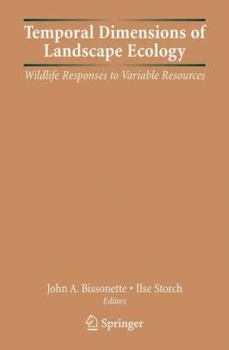Temporal Dimensions of Landscape Ecology: Wildlife Responses to Variable Resources
Select Format
Select Condition 
Book Overview
Over the past twenty-five years, the effects of the spatial distribution and scaling of resources on animal populations have been increasingly studied in wildlife biology, landscape ecology, conservation biology, and related fields. However, spatial patterns change over time. In Temporal Dimensions of Landscape Ecology: Wildlife Responses to Variable Resources, the authors discuss the effects that temporal changes in resources have on animal populations. Resource availability and quality are not distributed homogeneously over time, depending for example on predictable changes in seasons, mating and birthing cycles, unpredictable resource pulses and weather-related phenomena, ecological disturbances, and historical legacies. The book addresses the idea of current as well as historical temporal influences on resource availability, quality, and distribution. The authors draw attention to neglected temporal issues so important to understanding species and community responses. This book will interest wildlife and conservation students and practitioners working with temporal and spatial scale issues.





